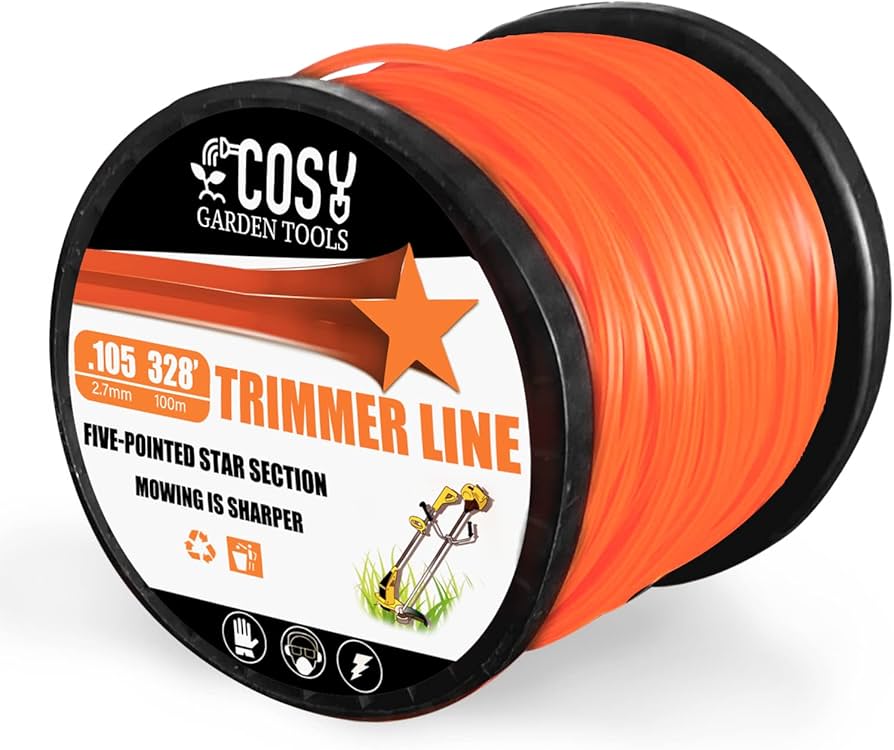Weed Wacker String, When it comes to maintaining a pristine lawn and garden, a reliable weed wacker (also known as a string trimmer) is an essential tool for any homeowner or landscaper. One crucial component that often goes overlooked is the weed wacker string, the thin line that cuts through grass and weeds with precision. This article will delve into everything you need to know about weed wacker string, from types and sizes to maintenance tips.
What is Weed Wacker String?
Weed wacker string is a nylon line that is fed through a spinning head of a string trimmer. As the head spins, the string’s rapid movement allows it to slice through weeds, grass, and other unwanted vegetation. This tool is particularly useful for reaching areas that are difficult to mow, such as along fences, trees, and flower beds.
Types of Weed Wacker String
There are several types of weed wacker string available, each designed for specific tasks and environments:
- Round String: The most common type, round strings are versatile and suitable for general trimming tasks. They provide a good balance between cutting ability and durability.
- Square String: This type features four edges, allowing for a more aggressive cut. Square strings are ideal for tougher vegetation but may wear down faster than round strings.
- Star-Shaped String: Designed for heavy-duty work, star-shaped strings can cut through thick weeds and grass efficiently. Their design helps to reduce noise and vibration during operation.
- Multistrand String: Made from multiple strands of nylon, this type offers enhanced durability and cutting power. It’s suitable for professional landscapers or those with large areas to maintain.
Size Matters: Choosing the Right Diameter
Weed wacker string comes in various diameters, typically ranging from 0.065 inches to 0.155 inches. The size you choose will depend on your weed wacker model and the type of job you intend to perform.
- Thinner Strings (0.065 to 0.085 inches): Best for light-duty tasks and smaller residential lawns. They are easier to handle and reduce strain on the trimmer’s motor.
- Medium Strings (0.090 to 0.105 inches): These strings are versatile and suitable for a variety of trimming jobs, making them a popular choice for many homeowners.
- Thicker Strings (0.110 to 0.155 inches): Ideal for heavy-duty work, such as tackling thick brush or heavy weeds. These strings provide superior cutting power but may require a more robust trimmer.
How to Replace Weed Wacker String
Replacing the string on your weed wacker is a straightforward process. Here’s a step-by-step guide:
- Unplug or Disconnect the Trimmer: Safety first! Ensure your trimmer is unplugged or the battery is removed.
- Remove the Spool: Depending on your model, you may need to press tabs or unscrew the spool to take it off.
- Remove Old String: Cut away any remaining old string from the spool.
- Cut New String: Measure and cut the new weed wacker string to the appropriate length, usually around 10-20 feet.
- Wind the String: Follow the arrows on the spool to wind the new string evenly. Be careful not to overlap the string.
- Reattach the Spool: Place the spool back onto the trimmer, ensuring it locks into place.
- Test the Trimmer: Once reassembled, plug in or reconnect the trimmer and test it to ensure the new string is feeding correctly.
Maintenance Tips for Weed Wacker String
To extend the life of your weed wacker string and ensure optimal performance, consider these maintenance tips:
- Store Properly: Keep your weed wacker string in a cool, dry place away from direct sunlight to prevent it from degrading.
- Avoid Hard Surfaces: When using your trimmer, avoid contact with hard surfaces like sidewalks or rocks, which can dull the string more quickly.
- Check for Tangling: Regularly inspect the spool for any tangling or excessive wear, replacing the string as needed.
- Use the Right Speed: Adjust your trimmer’s speed according to the thickness of the weeds you are cutting. Using a higher speed for tougher jobs can prevent the string from breaking.
Conclusion
Weed wacker string is an essential component of lawn maintenance that deserves careful consideration. By understanding the different types, sizes, and maintenance practices, you can optimize your weed wacker’s performance and keep your outdoor spaces looking their best. Whether you’re a weekend warrior or a professional landscaper, the right weed wacker string will make your trimming tasks easier and more efficient.
You Might Also Like These:



